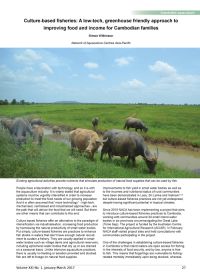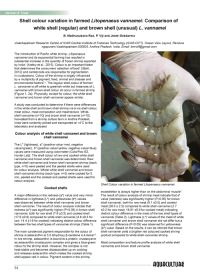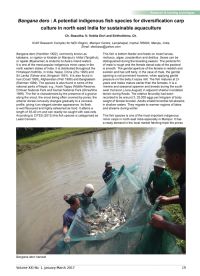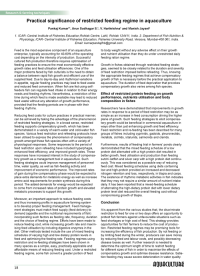Aquaculture Asia Magazine, January-March 2017
21 April 2017 | 14525 views | .pdf | 5.24 MB | Freshwater finfish, Gender, Health and Biosecurity, Nutrition and feeding, Shrimp, Cambodia, India, Nepal, Thailand, Markets and trade, Freshwater prawns
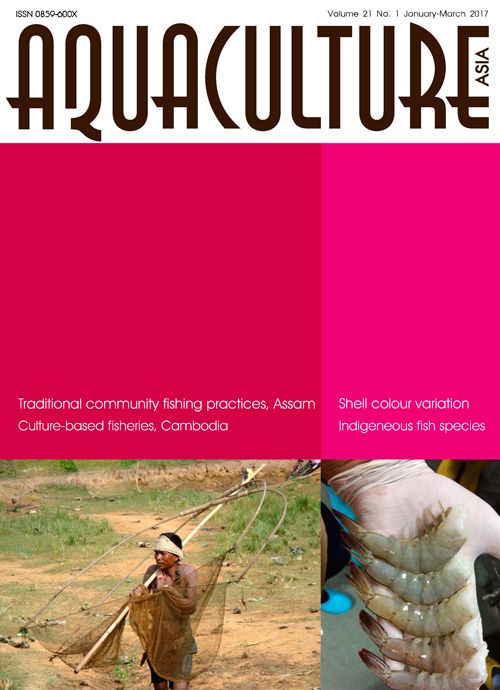
Editorial
- Anti-microbial resistance in aquaculture: It's more scary than you think.
Simon Wilkinson
Markets and trade
- Participatory market chain approach: An unidentified sustainable supply chain model to boost fish nurseries.
Shailesh Gurung
People in aquaculture
- Traditional community fishing practices of rural Kamrup of Assam.
Deepjyoti Baruah
Research and farming techniques
- Practical significance of restricted feeding regimes in aquaculture.
Pankaj Kumar, Arun Sudhagar S., V. Harikrishna and Manish Jayant - Bangana dero: A potential indigenous fish species for diversification of carp culture in north east India for sustainable aquaculture.
Ch. Basudha, N. Sobita Devi and Sinthoileima, Ch. - Shell colour variation in farmed Litopenaeus vannamei: Comparison of white shell (regular) and brown shell (unusual) L. vannamei.
B. Madhusudana Rao, P. Viji and Jesmi Debbarma
Sustainable aquaculture
- Culture-based fisheries: A low-tech, greenhouse friendly approach to improving food and income for Cambodian families.
Simon Wilkinson
NACA Newsletter
- 15th meeting of the Asia Regional Advisory Group on Aquatic Animal Health.
- Consultation on responsible production and use of feed.
- Giant Prawn 2017.
- New NACA website preview.
- Reducing health risks from anti-microbial resistance in aquaculture.
Creative Commons Attribution.

